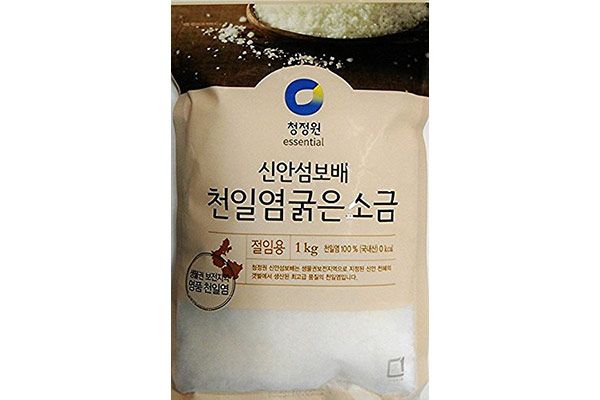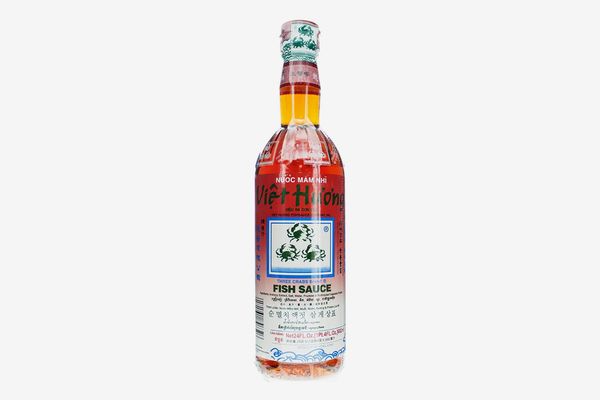
Most home cooks are okay with using just one kind of salt. Its job is to make things salty — no more, no less. But ask a professional chef, baker, or restaurateur and they’ll give you a long and detailed list of salts they use depending on the dish they’re whipping up. While there’s no shame in sticking to one multipurpose salt, the better the salt the better your food will taste. Like wine or coffee, good salts carry the flavors and minerals of the place where they were harvested. And like wine or coffee, choosing your new go-to can be overwhelming, to say the least. So to help you broaden your flavor palette we talked to nine chefs about the various salts they use to season their food — plus a few salty alternatives.
Best everyday sea salts
Carla Perez-Gallardo and Hannah Black of Lil’ Deb’s Oasis in Hudson, New York, describe themselves as high salt and high acid cooks, and pull from a diverse arsenal of salts depending on what they’re making. But when they need something to salt their pasta water they reach for this classic. “I think probably all the chefs that you talk to will tell you Diamond Kosher salt is the one to have around. We use it as our bulk salt, to salt pasta water or potato water, and when we just really need to throw in a whole quart of salt somewhere.”
Not every chef is a fan of Diamond Kosher salt, however. Michele Baldacci, chef at Camillo and Locanda Vini & Olii in Brooklyn, says, “In the very beginning, we used to use kosher salt but I hated it because it didn’t salt things enough. The proportions compared to Italian salt were all wrong. Now I only use Sicilian salt imported from Salina in Trapani, Italy. The sea water is left to evaporate and then the sea salt is extracted. So basically they are giant pools of shallow seawater. It’s really beautiful to drive by and see the mountains of sea salt. I use coarse salt for pasta water, crushed coarse salt for grilled meat, and fine salt for everything else. The coarse salt is minimally processed. I have even found pebbles in the bags. They definitely clean it, otherwise it wouldn’t be usable, but it’s really minimally processed and I like that.”
In baking, especially when you’re making bread and pastries for large groups, consistency is key. That’s why Zoe Kanan, the pastry chef at Simon and the Whale, likes this fine, French sea salt. “When I’m making bread or various kinds of pastries the salt has a function in the recipe. It’s there for seasoning, but it’s also there to help with gluten development or the browning of crusts. We use Baleine fine sea salt inside all of our pastries. I like the slight minerality and the superclean and very pure flavor. It works quite well when we’re just looking for basic salinity and aren’t asking too much of the salt.”
When it comes to flavoring soup, the finer the texture of your salt the quicker it will incorporate. Sarah Gavigan, the chef and owner of Otaku Ramen in Nashville, prefers this budget option because she goes through it so fast. “I like to use this inexpensive Korean sea salt for everyday cooking. I obviously make a lot of soup, and this salt is very fine, almost like talcum, so it dissolves into liquids really well. Because it’s 100 percent sea salt, with no additives, it doesn’t have any of that off-putting ammonia taste — it just brightens everything it touches. It’s almost like MSG, plumping up flavor. I probably use too much of it at home, but it’s just so good.”
“I’m all about the Hakata Sel De Mer Roti,” says Nick Korbee, the chef at Egg Shop in New York. “It’s harvested in Mexico and Australia, then imported to Japan where it’s mixed with Japanese seawater before being dehydrated at a high temperature and roasted again.” Korbee loves this globally made salt for its true-to-the-ocean briny taste. “It’s my go-to for high-quality beef, game, exotic eggs, and fresh seafood. It accentuates natural flavor while providing a subtle earthiness that leaves your guests in awe of your secret umami genius.”
Best finishing salts
We’re fans of Maldon salt here at the Strategist, especially the little desk-sized tins of the stuff, and Hannah Black of Lil’ Debs is too. “Maldon is obviously always on hand and we put it on almost all of our desserts. When you’re finishing a dish, it goes well on most things. It doesn’t spread the saltiness across, but it adds little pockets of flavor and texture. With ceviche, Maldon salt is always the best, and with salad it’s always a key element.”
Like raw homemade honey, small-batch hand-harvested sea salt is a rare luxury. One that Carla and Hannah of Lil’ Debs were kind enough to share with us. “I grew up in a household with a mom who was obsessed with salt. So I have a bunch of different particularities, but at the restaurant last year we were blessed with a gift of salts from a friend of ours whose father hand harvests and dries single origin salts in Cape Cod. So we’ve been getting these little jars of salt labeled with the source location and the date that it was collected. It’s been really beautiful to access salt from that close of a viewpoint because you really can taste the terroir, dare I say. It’s definitely available locally because our friend has been spreading the gospel.”
Both Gunnar Gíslason, executive chef at Agern, and Zoe Kanan of Simon and the Whale recommended this Icelandic sea salt for finishing everything from bagels to fish and meat. “I love Saltverk sea salt from the very west of Iceland. The flavor and saltiness is right up my alley, but most importantly, their flake salt is produced with 100 percent geothermal energy in middle of nowhere in stunningly beautiful Reykjanes. We use it as a finishing salt for a lot of our plates, but especially on top of any fish and meat. I feel like Saltverk is a bit softer and more mild in flavor than a lot of other salts, and I love the way it’s produced.”
Carla Perez-Gallardo and Hannah Black mentioned using black sea salt on a dessert they call coconut snow. But Bruce Bromberg, co-founder, chef, and owner of Blue Ribbon Restaurants, uses the smoky version of the dark salt on savory things like ribs and roasted vegetables. “After moving to Hawaii two years ago I was somewhat disappointed with the quality of the sea salts, but one day at the Farmer’s Market in Waimea, on the Big Island, I stumbled across Hawaiian Volcano Sea Salt. It has radically changed the way I use salt and how I cook. These salts are derived from waters that are brought up to the surface from 2,200 feet deep and dried by the sun in a natural manner to create a light, flaky crystal. The Kiawe Smoked version is amazing for curing and for foods with a bold flavor, like roasts, ribs, and chicken; I like the Guava Smoked for more delicate dishes, like roasted vegetables, poke, and crudo.”
France is well known for their gray salt with its melt-in-your-mouth texture and slight brine. “At the Riddler, we’ll have a popcorn machine for serve-yourself complimentary popcorn all day long, with a selection of 12 seasoned salts. As you can imagine, we’ve done lots of testing with all sorts of salts, and we are obsessed with a Fleur de Sel from the Isle of Rhé by Esprit du Sel,” says Jen Pelka, owner of the Riddler in San Francisco. “It’s collected by hand from the surface of the water in the Esprit du Sel bays, and dried in the sun. Even by itself on popcorn, warm butter, and nothing else, it’s perfect.”
Best salt alternatives
Several chefs mentioned using alternatives to sea salt in certain dishes or as a finishing touch that adds more than just basic saltiness. “We sometimes substitute fish sauce entirely for regular salt and that adds an umami flavor and saltiness.” Perez-Gallardo and Black use this in the sauce they make for tamales.
Zoe Kanan let us in on her most recent salty discovery that tops slabs of butter in her bread course at Simon and the Whale. “This is from a spice company that my friend Jena introduced me to called Burlap & Barrel. They source single-origin specialty spices and work directly with farmers and one of their products is wild Icelandic kelp powder. It’s wild harvested and dried out before being ground into a mixture of granules of kelp and tiny, tiny flakes of salt. I completely fell in love with it when I tasted it and it’s become a pantry item in our kitchen. We serve it with our bread course at Simon and the Whale on top of butter, it’s amazing. I take it home and I put it on popcorn it’s my go-to salt when I don’t need it to perform technically for me and I’m just looking for flavor.”
The Strategist is a new site designed to surface the most useful, expert recommendations for things to buy across the vast e-commerce landscape. Some of our latest conquests include the best notebook, black T-shirts, fashion-editor-approved jeans, toothbrush, and apartment décor. Note that all prices are subject to change.
If you buy something through our links, New York may earn an affiliate commission.

















